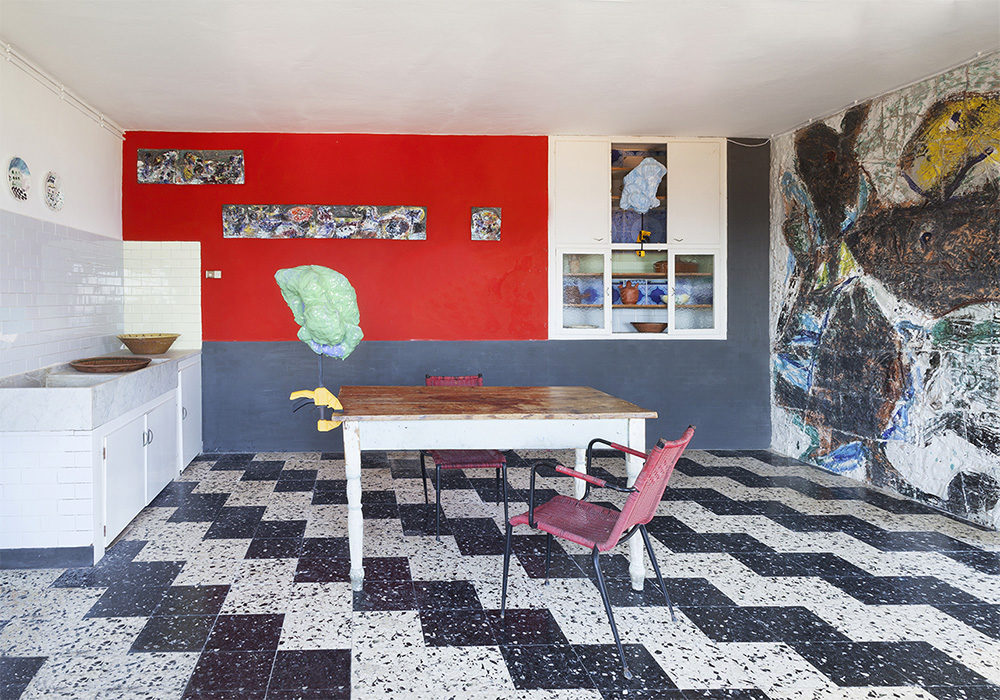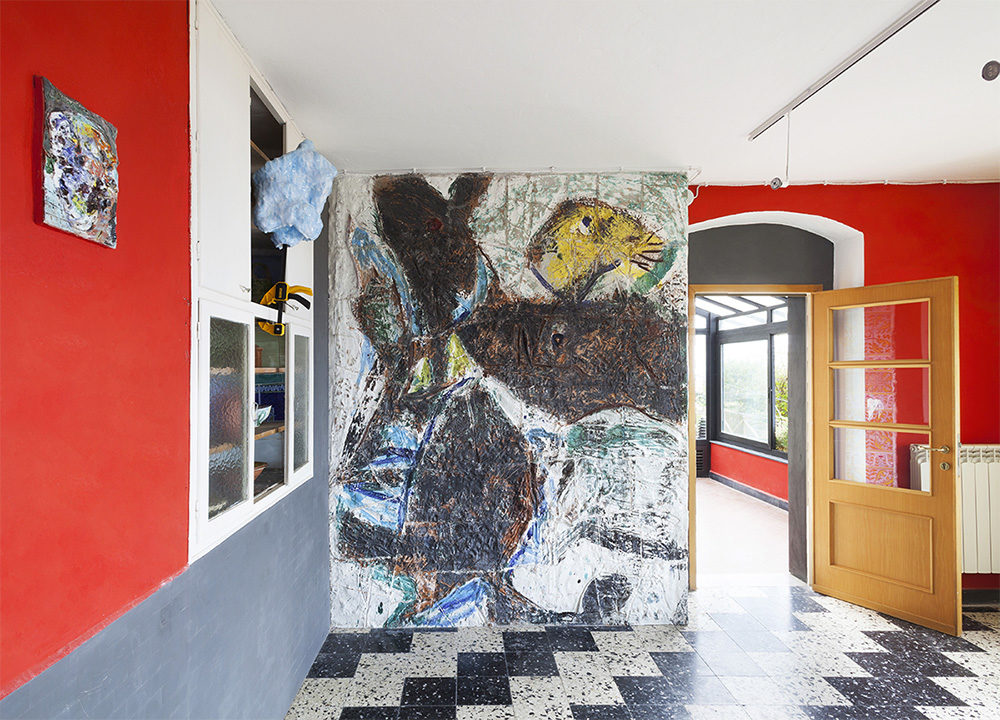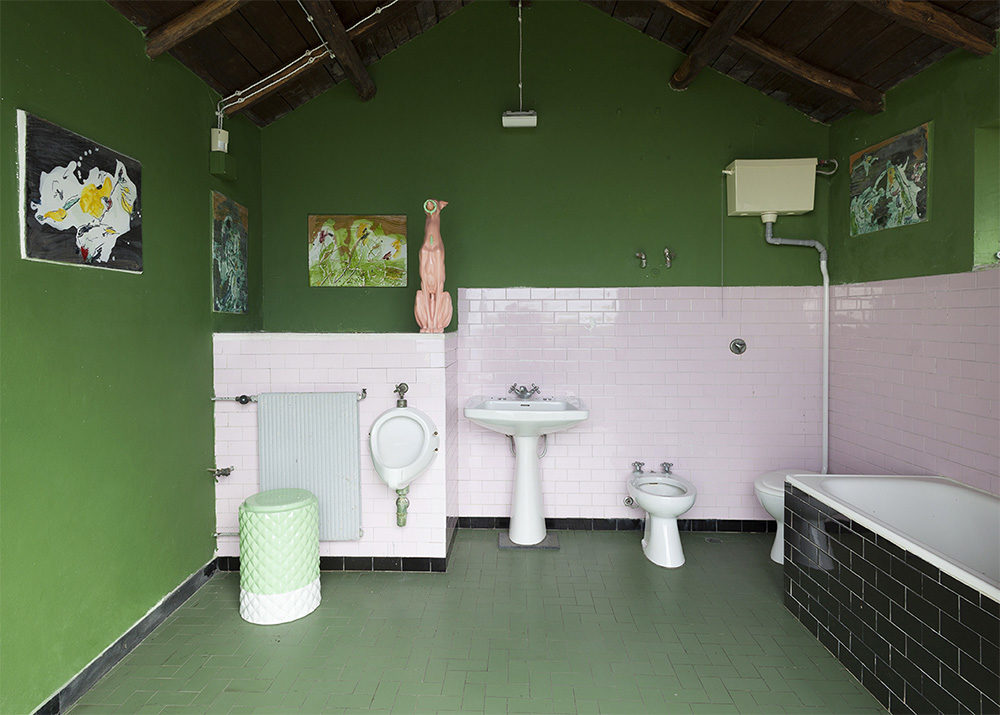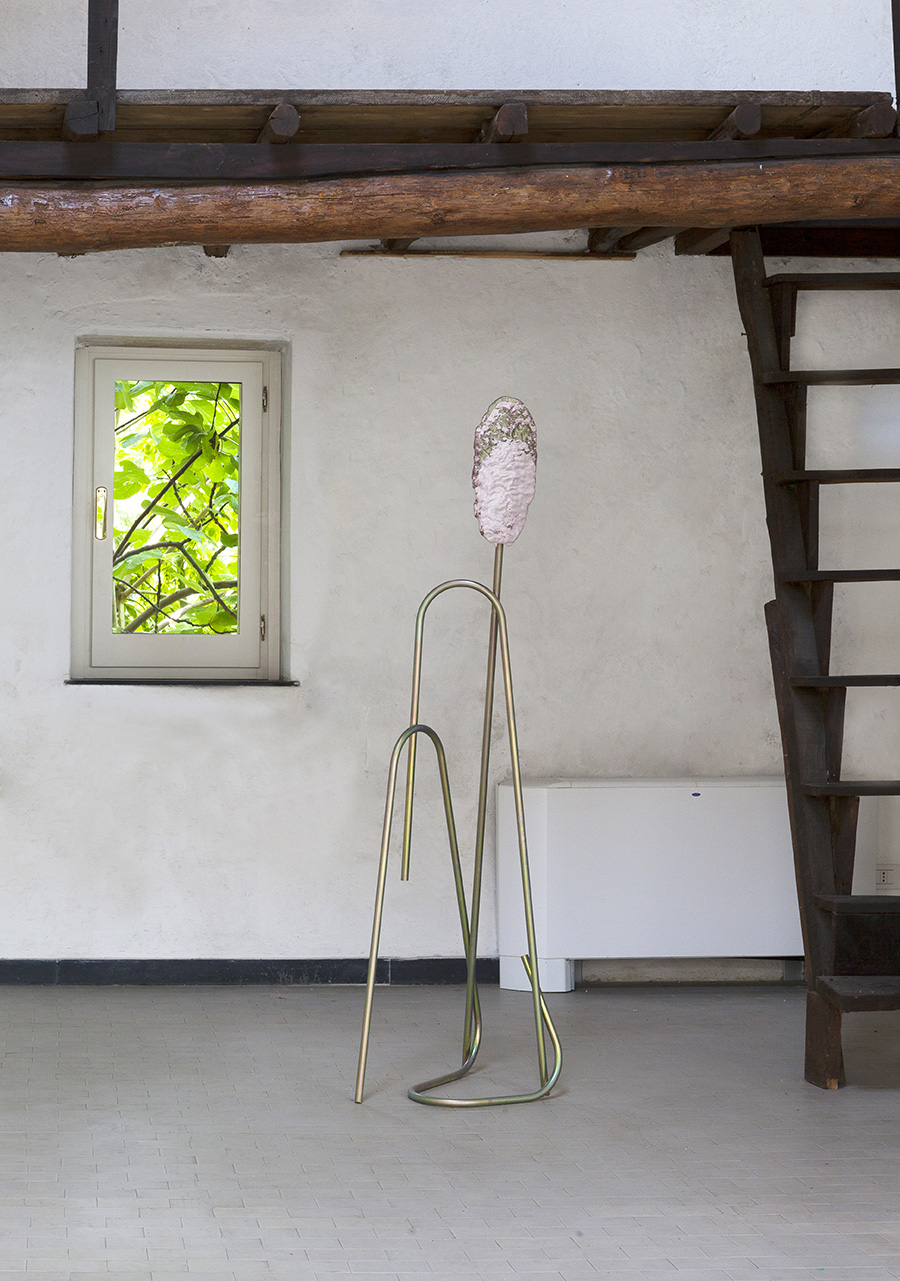
- Source: SIGHT UNSEEN
- Author: JILL SINGER
- Date: JANUARY 30, 2019
- Format: DIGITAL
Come for the Ceramics Exhibition, Stay for the Hallucinatory Interior Design at This Italian House-Museum

When we last checked in on Danish ceramicist Anders Ruhwald, he was living in Detroit and on the cusp of launching an impressively high-concept, site-specific installation — the reimagining of an abandoned Detroit townhouse as a completely fire-blackened interior, complete with charred sculptures and ceramics. Before that, his biggest work to date had been another series of site-sensitive installations at the Saarinen House in Bloomfield Hills, Michigan. Taken together, the two projects showed a radical sensitivity to domestic space and an interest in the meaning of structures as they pass through time: When a building disappears, what happens to our memories of it? And when the architect of a structure dies, what happens to the space they left behind?
It’s the latter concept that Ruhwald explored in an exhibition last summer called “The Body, The Mind, This Constructed World,” held at Casa Museo Jorn, a house-museum dedicated to the late Danish artist Asger Jorn. Jorn, a leader of the Situationists, spent his summers in Albissola Marina, a coastal town in the Ligurian province of Italy, and when he died he left his home to the city. After researching Jorn’s writings and theories on architecture and design, Ruhwald created fifteen sculptures in response, and installed them in and around the buildings and gardens of the museum.
“Ruhwald’s individual sculptures become annotations to the house and recontextualize central ideas of Asger Jorn’s universe and theoretical framework — especially his critique of functionalism, capitalism and his use of décollage as an artistic strategy,” a statement from exhibition organizers Officine Saffi reads. “In this way, Ruhwald’s interventions at Casa Museo Jorn serve as questions and commentary to Jorn’s architecture in the form of sculptures. These sculptures occupy specific sites in the museum — not trying to inhabit it, but by engaging a house that once was a living artwork.”
In the images below, it’s almost difficult to discern which interventions belong to Ruhwald and what was simply the result of Jorn’s wildly colorful and creative imagination; we could probably devote a whole article to the array of tile patterns in the house. And while the exhibition is now closed, it’s still possible to visit the Jorn museum, revel in the absolutely bonkers interior design, and recall, ghost-like, the objects that once inhabited the space.







